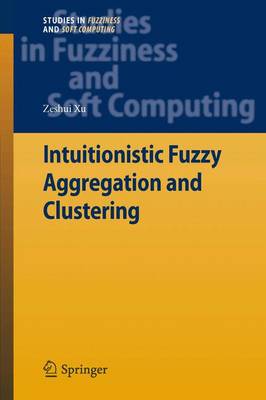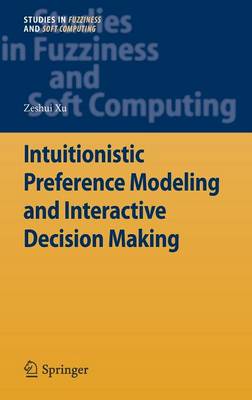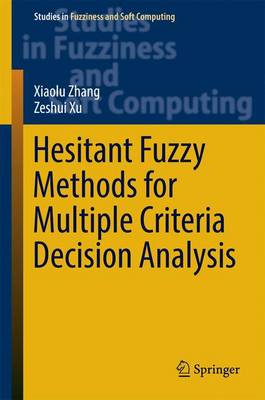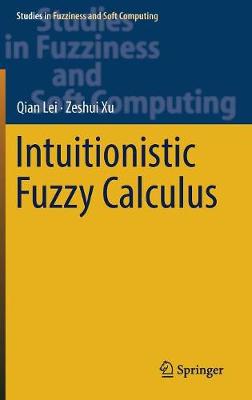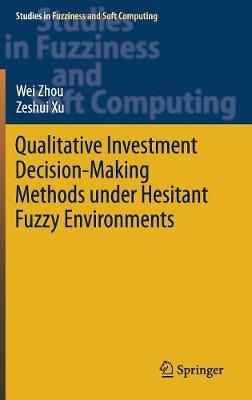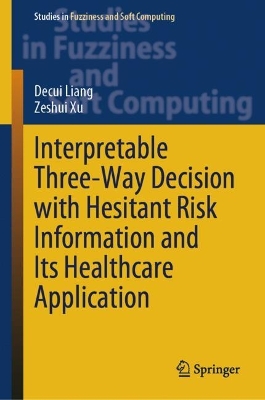Studies in Fuzziness and Soft Computing
9 primary works
Book 279
Book 280
Intuitionistic Preference Modeling and Interactive Decision Making
by Zeshui Xu
Book 314
Book 345
Hesitant Fuzzy Methods for Multiple Criteria Decision Analysis
by Xiaolu Zhang and Zeshui Xu
The book offers a comprehensive introduction to methods for solving multiple criteria decision making and group decision making problems with hesitant fuzzy information. It reports on the authors’ latest research, as well as on others’ research, providing readers with a complete set of decision making tools, such as hesitant fuzzy TOPSIS, hesitant fuzzy TODIM, hesitant fuzzy LINMAP, hesitant fuzzy QUALIFEX, and the deviation modeling approach with heterogeneous fuzzy information. The main focus is on decision making problems in which the criteria values and/or the weights of criteria are not expressed in crisp numbers but are more suitable to be denoted as hesitant fuzzy elements. The largest part of the book is devoted to new methods recently developed by the authors to solve decision making problems in situations where the available information is vague or hesitant. These methods are presented in detail, together with their application to different type of decision-making problems. All in all, the book represents a valuable reference guide for graduate students and researchers in the both fields of fuzzy logic and decision making.
Book 353
Book 376
Qualitative Investment Decision-Making Methods under Hesitant Fuzzy Environments
by Wei Zhou and Zeshui Xu
This book describes five qualitative investment decision-making methods based on the hesitant fuzzy information. They are: (1) the investment decision-making method based on the asymmetric hesitant fuzzy sigmoid preference relations, (2) the investment decision-making method based on the hesitant fuzzy trade-off and portfolio selection, (3) the investment decision-making method based on the hesitant fuzzy preference envelopment analysis, (4) the investment decision-making method based on the hesitant fuzzy peer-evaluation and strategy fusion, and (5) the investment decision-making method based on the EHVaR measurement and tail analysis.
Book 409
Decision-Making Analyses with Thermodynamic Parameters and Hesitant Fuzzy Linguistic Preference Relations
by Peijia Ren and Zeshui Xu
The book introduces readers to some of the latest advances in and approaches to decision-making methods based on thermodynamic characters and hesitant fuzzy linguistic preference relations. By investigating the decision-making methods with thermodynamic parameters based on different information representatives, the book offers readers a novel perspective for solving problems under uncertainty. By exploring the consistency and consensus of hesitant fuzzy linguistic preference relations, the book gives readers efficient ways for preference analysis under uncertainty, chiefly intended for researchers and practitioners working in operations research, multi-attribute decision making, preference analysis, etc. The book can also be used as supplementary material for postgraduate and senior-year undergraduate students of the relevant professional institutions.
Book 431
Interpretable Three-Way Decision with Hesitant Risk Information and Its Healthcare Application
by Decui Liang and Zeshui Xu
As a new interpretable model, three-way decision has also received academic attention in machine learning. With respect to different hesitant fuzzy information, this book deeply discusses the deduction process of decision rules of three-way decision and generates interpretable knowledge with the risk semantics. It further explores the applications of three-way decision to support healthcare management. This book is used as a reference for engineers, technicians, and researchers who are working in the fields of management science, operation management, computer science, information management, fuzzy mathematics, business intelligence, and other fields. It also serves as a textbook for postgraduate and senior undergraduate students of the relevant professional institutions of higher learning.
Book 433
Granularities-Driven Hesitant Fuzzy Linguistic Decision Making
by Yuanhang Zheng and Zeshui Xu
This book introduces a state-of-the-art extension of fuzzy sets that is hesitant fuzzy linguistic term sets with granularity levels, and based on the fuzzy technique, several granularities-driven hesitant fuzzy linguistic decision-making methods are introduced to provide powerful tools to solve actual problems. Motivated from the idea of granular computing, the technique of hesitant fuzzy linguistic term sets with granularity levels is constructed, which not only brings flexibility and individuality for the linguistic model, but also provides a possibility to process a large amount of linguistic information in group decision-making efficiently and accurately. Thus, the researches on granularities-driven hesitant fuzzy linguistic decision making, can provide an effective way to solve practical decision-making problems based on complex linguistic information, and enrich the research system of decision-making and granular computing in theory and practice.
In specific, this book introduces the construction of hesitant fuzzy linguistic term sets with granularity levels, and methods of handling attribute dependence, attribute reduction, single-objective group decision-making, and bi-objective group decision-making. The above decision-making methods are applied to the evaluation of medical and health management, and the effectiveness and advantages of the methods are verified by simulation comparison and analysis. Therefore, this book has not only important theoretical significance, but also broad application prospects.
